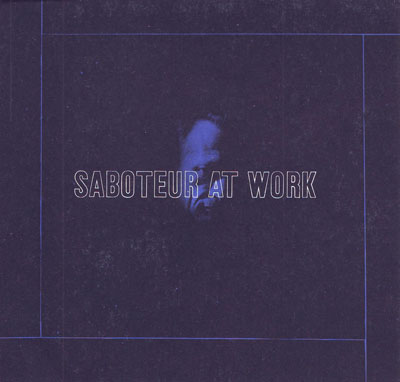Beware of Bolsheviks!by Dwayne A. Day
|
| But when assessing propaganda, it is important to separate effectiveness from quality. |
Recently, while going through the archives of the Glenn L. Martin Company, I came across a bit of sloppy—and I presume ineffective—propaganda. The Glenn L. Martin Company had a long history. It built the B-26 Marauder bomber during World War II and by the 1960s was building missiles and rockets. By the mid-1960s one of its major projects was building the upper stage, known as the Transtage, for the Titan space launch vehicle. Inevitably, mergers happened and the company became Martin Marietta, then eventually Lockheed Martin. Like many major American aerospace companies, the leadership had little sense of their own corporation’s history and thus relatively few records remain of Martin’s proud aerospace heritage.
The bit of propaganda that I found was a brochure produced by Martin’s presentations department around the mid-1960s. It is folded down the middle and each page is only about five inches on a side. The cover is a dark blue with the words “Saboteur At Work” in bold letters with a ghostly image of a face behind them. Inside is a bit of text oddly interrupted by eyeballs, and the silhouette of a man.
The text is obscure and, well, puzzling:
KEEP ALERT! A SABOTEUR IS IN THE PLANT…
He carries no weapons, no munitions, not even a crow bar—he doesn’t need any… he lets us do his dirty work. This saboteur is the spirit of those enemies who hold that Americans are soft—that our private lives are full of countless luxuries and waste… that we waste money, time, and effort on the job—even when that job is national defense. In World War II, American industry succeeded because it was lean, trim, and combat ready, fixed on a single objective—total victory. But what about now? Have sixteen years of cold war frozen American ingenuity and purpose? This saboteur thinks so… he says “Americans do some things out of sheer habit, never questioning the expense or the value received for that expense.” For example, he knows that our missiles and systems have been overdesigned with frills that add nothing to the effectiveness of the weapons system but plenty to the cost. He also knows that we waste man hours, paper work, tools, equipment, and hundreds of other items that drain our much needed defense money. This is economic sabotage and it can devastate our defense. This enemy never competes with the strengths of our nation. He tries to capitalize on our weakness. This is why the saboteur is in the plant… daily… watching and waiting for you and me to help him.
WHAT ARE YOU GOING TO DO ABOUT IT?
I’ve now read this thing multiple times and I’m still confused. Are the saboteurs the Martin employees who “waste man hours, paper work, tools, and equipment”? Are the saboteurs the engineers who overdesign missiles and systems “with frills that add nothing to the effectiveness of the weapons system but plenty to the cost”?
Or is the saboteur the person who claims that Americans do these things and none of those claims are actually true?
I don’t know. I don’t get it. It’s a lousy effort at propaganda. It would have been more effective to simply state “if you see somebody stealing tools, report him!”—assuming that the company actually opposed such behavior.
| Are the saboteurs the Martin employees who “waste man hours, paper work, tools, and equipment”? Are the saboteurs the engineers who overdesign missiles and systems “with frills that add nothing to the effectiveness of the weapons system but plenty to the cost”? |
But the brochure still intrigues me and for a rather odd reason. My scan was made at high resolution, but still does not do it justice. The ghostly face on the cover of the actual item is so perfectly shaded that it looks almost three dimensional, like a hologram, and I found myself subconsciously moving the page back and forth like you do with a holographic picture.
The picture is of actor George C. Scott, undoubtedly used without his permission.
Scott played General “Buck” Turgidson in one of my favorite movies, Dr. Strangelove. He had many memorable quotes in that movie, but one of my favorites was his plea to the President in favor of nuclear war: “I’m not saying we wouldn’t get our hair mussed. But I do say no more than ten to twenty million killed, tops. Depending on the breaks.”
Is that another subconscious message in the brochure: Beware of crazed Air Force Generals? Maybe that’s not what Martin’s presentations department meant.
